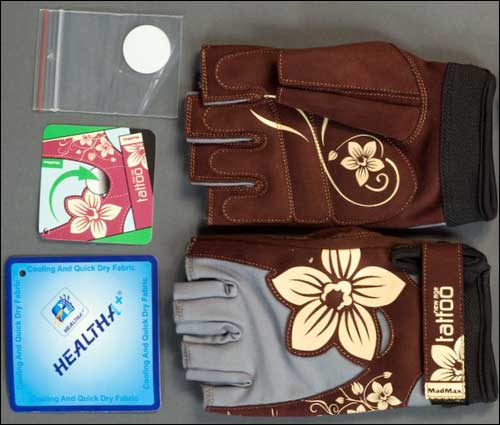At Fitness Korzo—a health club in the city of Sumperk, in the northeastern part of the Czech Republic—fitness enthusiasts utilize RFID tags that slip into their gym gloves to open and close changing-room lockers. They can also use the gloves to pay for food, beverages and services, such as aerobics classes and massages.
The application is similar to many that rely on RFID-based access cards (see RFID Helps Turkish Gym-Goers Get Fit and Madrid Reebok Club Members Play With RFID). Yet it is unique because the RFID tag slides into a gym-goer’s glove, says Petr Hermann of Mad Max Sportswear, the Prague company that manufactures the gloves, which are sold through online merchants and at sporting goods stores in Austria and the Czech Republic.
To date, Hermann says, Mad Max has sold 20,000 pairs of its RFID-based Tattoo fitness gloves in 30 countries, with its top markets being in Austria, Germany, Italy and Russia. The system that supports the gloves, known as Your Real Identity, was created by Mad Max and software developer Inspire, to enable RFID-based access systems, lockers and payment systems at gyms. In the Czech Republic, some 30 or 40 gym operators presently employ the system—or elements of it—and Mad Max is developing an online marketing drive for the system.
Hermann declines to reveal how many gyms worldwide are currently enabled for the company’s RFID gloves, though he does indicate that the gloves’ RFID tags can be read by a variety of RFID systems. Gyms need not install the solution designed by Inspire and Mad Max, he says.
“It is really absolutely universal,” Hermann says. “You can take our gloves on holiday in the United States and find gyms using an RFID system. Once the chip is registered and a credit balance is created, you can start visiting the gym.”
Mad Max began developing the RFID application five years ago as it sought ways to increase comfort for people who are exercising. The manufacturer ruled out RFID-based access cards since most gym-goers lack pockets on their clothing to hold them.
“If you are a woman, you won’t have pockets on your training suit to be able to carry a chip the size of a credit card,” Hermann says. “So, we were looking for a solution for integrating such chips directly into gloves, in order to increase the comfort of our customers during exercising, and use this technology without any limits.”
The Mad Max system utilizes circular RFID tags that measure less than 1 millimeter (0.04 inch) thick and 25 millimeters (1 inch) in diameter, and fit into a special pocket of the right glove. Each tag contains an EM Microelectronic EM4102 64-bit read-only 125 kHz chip encoded with a unique ID number. Although the tags are encased in plastic, they must be removed from the glove whenever it is washed, in order to avoid damaging the tag.
As health clubs move to a self-service model, Hermann says, their operators constantly seek ways to automate a variety of processes and reduce their personnel count.
According to Hermann, Mad Max found that the best technology for gyms was RFID, because it isn’t too expensive, and because it is possible to integrate the technology into lockers, vending machines and access systems. “After such RFID systems are in place,” he states, “gyms would ideally have only two employees present at the reception desk.”


